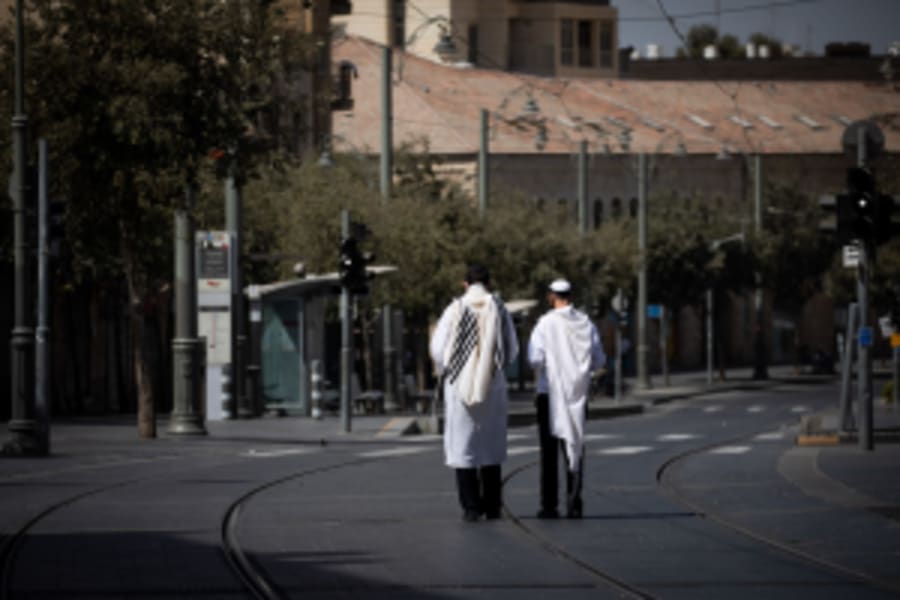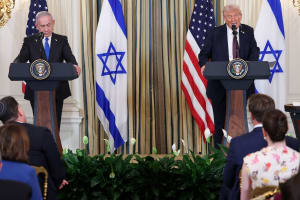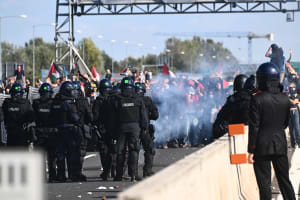20 years after The Disengagement Plan, Israel finds itself again facing the issue settlements and the country’s security
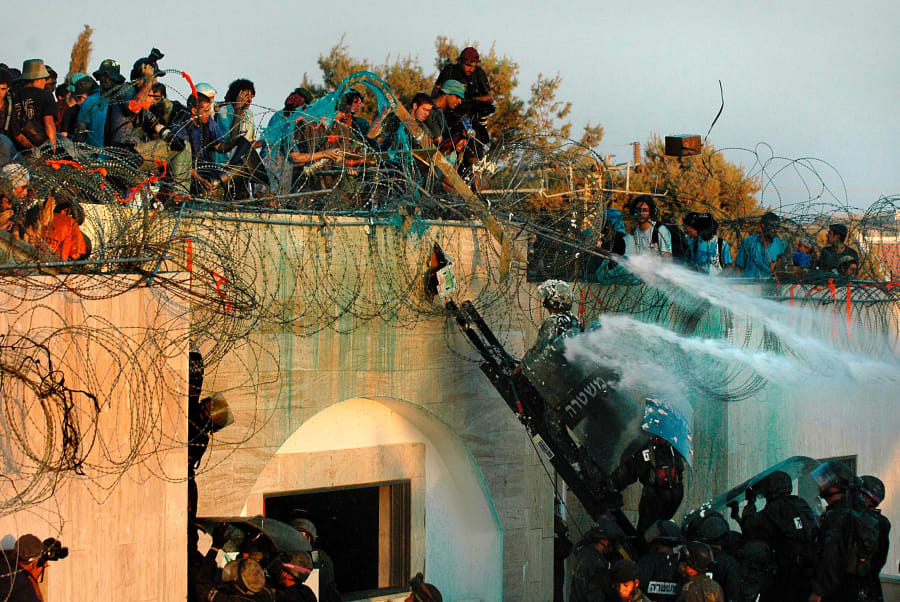
Twenty years ago, between August 15 and Sept.12, 2005, the Israeli government dismantled around 21 Jewish settlements in the Gaza Strip, forcibly removing almost 9,000 residents, in a unilateral decision referred to in Israel as The Disengagement (HaHitnatkut).
The plan was presented by then-Prime Minister Ariel Sharon, who had a well deserved reputation as a hard charging, gruff soldier, willing to push boundaries in order to get results, leading to the nickname “the bulldozer.”
Sharon had been a founding member of the Likud party, replacing Benjamin Netanyahu as party head after Netanyahu stepped down in 1999. Considered a champion of the settler movement, Sharon won the position of prime minister in 2001 after campaigning on a platform to increase settlement activity, even in Gaza.
After Hamas started to launch their first rudimentary rockets in 2002, usually fired at the Jewish settlements in the Strip, the settler movement criticized Sharon, stating, “If the rockets were falling on Tel Aviv, Israel would retaliate!”
Sharon responded with a famous statement, “The rule for Netzarim [one of the Israeli settlements in central Gaza] is like the rule for Tel Aviv!”
However, within months, Sharon made an announcement which would shock the settlers, stating that Israel would unilaterally disengage from Gaza.
But what were Jews doing in Gaza in the first place?
Jewish History in Gaza before Gush Katif
The history of Hebrew and Jewish presence in Gaza goes back to the earliest written source about Israel, the Bible. In Genesis, both Abraham and his son Isaac are said to have lived in Gerar, located in the modern day Gaza Strip.
In the Hasmonean period, Simon Maccabee started a Jewish settlement in Gaza as described in the extra-biblical book of 1 Maccabees 13:43-48, an event also referred to by the Jewish historian Josephus. After that point, the city changed hands several times between Egypt, Jewish leaders like Herod the Great, and the Syrian governor.
During the Mishnaic period, in the late second century AD, a large Jewish community settled in Gaza, and continued throughout the Byzantine period. It became an important stopping point for Jews wishing to visit Jerusalem from around the Mediterranean. That presence continued even through the Arab conquest in the 7th century. While one of Gaza’s synagogues was destroyed in the fighting, historical records continue to record the presence of an important Jewish community in Gaza.
In fact, Jewish presence continued in Gaza until World War I, when the Jews in Gaza were deported in 1915.
A small group of Jews attempted to return to Gaza following the end of WWI. However, the Arab pogrom of 1929 in which 69 Jews were killed in the streets of Hebron, led to a similar attempt by Arabs in Gaza. With help from British forces, the Jews of Gaza were evacuated again. From 1929 until the 1967 Six Day War, there was no Jewish settlement in Gaza.
In 1970, the situation changed when the Israeli government under Golda Meir decided to establish the communities of Netzarim and Kfar Darom, beginning the establishment of the Gush Katif communities. These were scattered throughout the Gaza Strip and would number 21 separate communities in 2005 when the Disengagement Plan was enforced and the 35-year-old project ended.
What led to the Disengagement?
If Jewish settlement in Gaza is an historic fact, and if Prime Minister Ariel Sharon was a staunch supporter of the settlement enterprise, what led him to change his mind so dramatically and forcefully?
At that time, Israel was in the midst of a peace process referred to as the Middle East Road Map, overseen by the United States, the European Union, the United Nations, and Russia, meant to deliver the “Two-State solution.”
As part of that Road Map, the Palestinian parties were supposed to “undertake an unconditional cessation of violence,” along with “comprehensive political reform,” while Israel was supposed to support the normalization of Palestinian life in the territories of Judea and Samaria.
When it became obvious that the Palestinians were not even attempting to stop the ongoing Second Intifada, nor even to take steps to stop the incitement against Jews and Israeli leaders in the official Palestinian Authority press and publications, Prime Minister Sharon decided to take unilateral steps that he believed would guarantee the safety of Israeli civilians.
Sharon had already approved the construction of the security barrier in 2002, following the deadly Passover Eve massacre in which suicide bombers entered the Park Hotel in Netanya and killed 30 people, while injuring another 140.
In a December 2004 speech, Sharon shared his reasoning, stating, “The concept behind this plan is that only security will lead to peace.” This statement represented a rejection of his previous way of thinking, in which the presence of settlements was believed to reduce the amount of Palestinian violence.
Even as he acknowledged the Palestinian failure to “fulfill their obligations” under the Road Map, Sharon vowed that Israel would keep its obligations. He promised the people of Israel that disengagement would lead to a reduction in terror attacks.
“The purpose of the “Disengagement Plan” is to reduce terror as much as possible, and grant Israeli citizens the maximum level of security. The process of disengagement will lead to an improvement in the quality of life, and will help strengthen the Israeli economy,” Sharon said. The prime minister even promised that the disengagement, along with the security barrier, would make it easier for the IDF to secure Israel’s borders.
He also acknowledged that the step was being carried out in order to “not harm our strategic coordination with the United States,” which was pressuring Israel over the issue of the settlements, believing them to be an obstacle to peace.
The Response in Israel
Sharon’s announcement exposed deep fault lines in Israel around the subject of the settlements, and the best way to achieve security. Many on the political left considered the settlements in Gaza and in Judea and Samaria to be significant obstacles to peace. Some in the center, believed that attempts to secure 8,800 Jewish settlers in Gush Katif from the over 1 million Palestinians in Gaza, simply didn’t make political or economic sense.
On the political right, especially among Sharon’s Likud party, there were also deep divisions. Benjamin Netanyahu, who had been engaged in various public spats with Sharon in an attempt to regain control of the party, was openly critical of the plan, promising to vote against it.
Among the settler communities, the belief was that despite the risk to Jews in the settlements, their presence served as a buffer against Palestinian aggression. They also believed that disengagement went against the principles of Zionism, which saw the Jewish return to the whole of land of Israel as a Jewish right. They warned that dismantling Gush Katif would lead to the closure of more settlements, including those in Judea and Samaria.
The Disengagement Plan led to huge protests in Israel, between those in favor of the plan, who often wore blue clothes and carried blue ribbons, and those opposed, who wore orange. The protests included emotionally charged scenes, especially once the forced evacuation of the communities of Gush Katif began.
However, despite promising to lead opposition to the Disengagement Plan, when the Knesset held its vote, Netanyahu, along with several other right-wing, Zionist politicians voted in favor of the plan.
The Expulsion from Gaza
Those being evacuated, often despondent at being forced from their homes, chanted slogans, such as “A Jew doesn’t expel a Jew.”
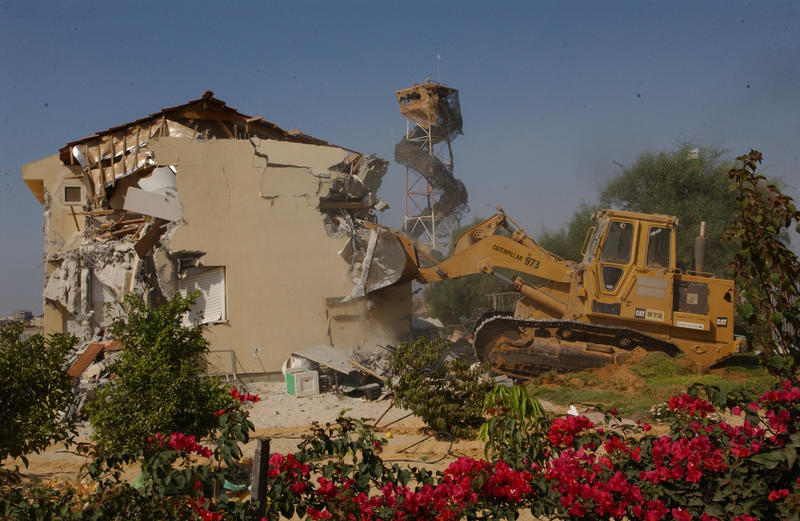
Some of the Gush Katif residents who served in the military, warned, in a prophetic way, that the end result would not be greater security, but greater violence.
"A million murderers will enter from the Philadelphi [Corridor]! Katyushas on Ashkelon! Mortars on Sderot! Murder in Netivot,” said a religious reservist as he was being carried out by other soldiers. “You are all complicit in this crime, and it won’t help at all!”
The expulsion, carried out over several weeks in the summer of 2005 led to a severe sense of distrust within the settler movement, which had only months before enjoyed at least tacit support from a broad swath of center and right-leaning Israeli politicians. The failure to adequately compensate families whose entire lives and often livelihood were abruptly uprooted came as another blow to the families, and increased distrust towards the government and the judicial system in the settler movement. Consequences that have continued to this day.
The Failure of the Expulsion - Hamas rises to power
However, the failure of the Disengagement Plan is not something that took 20 years to realize. Within two years of Israeli troops forcibly evacuating Jewish families from Gush Katif, and the abandoning of agricultural developments responsible for almost 40% of Israel’s produce, the Gaza Strip had not become a flourishing Palestinian micro-state led by a Palestinian Authority ready to take on its responsibilities under the Oslo Accords and the Road Map.
Instead, within two years, following a brutal civil war, Hamas seized control of Gaza from the Palestinian Authority, and began to impose a government aligned along the terror organization’s interests.
Hamas, which until then had operated solely as a terror organization, suddenly became a governing body— with expanded funding sources, the ability to levy taxes, and the development of additional revenue streams. This transformation enabled the creation of a standing army composed of companies, battalions, brigades, and a full command-and-control system, all situated just minutes from Israel’s southern border.
Within three years, Israel was fighting its first war against Hamas in Gaza, all the while attempting to maintain “deterrence.” Over the next 18 years, Israel would find itself engaged in operation after operation against an increasingly well-armed and prepared enemy in Gaza, as deterrence proved an elusive concept.
The failure of that policy, called “The Conception” in Israel, became violently and painfully apparent on Oct. 7, 2023, when the worst predictions of those expelled from Gaza suddenly became a horrible, bloody reality.
Ariel Sharon had promised a good future for Israel, while warning of Israel’s ability to respond to fire with fire.
“The unilateral disengagement plan is the Israeli answer to this reality [of poor security],” Sharon had stated. “This plan is good for Israel in any future scenario. The IDF will reorganize within defensive boundaries behind the security fence.”
“The world awaits the Palestinian response, a hand for peace or the fire of terror,” he had continued. “To the hand that is extended [in peace], we will respond with olive branches. But to fire, we will return fire harder than ever.”
The past 22 months of war have proven Sharon right in at least the last part of that promise.
The resettlement of Gaza?
With the 20th anniversary of the Gush Katif expulsion approaching, along with the possibility of the near end of the Gaza War, the nation of Israel finds itself facing a similar set of conditions: a lack of local security, an apparent lack of a willing peace partner on the Palestinian side, and a resurgent settler movement.
Since the start of the Oct. 7 Iron Swords War, settler groups have demanded the government plan for the resettlement of Gaza after the war. While Prime Minister Benjamin Netanyahu has consistently resisted this idea, many within his coalition are in favor.
One critical feature that has changed is the political landscape of the broader Middle East. Following the defanging of much of Iran’s proxy strategy against the Jewish State, and Israel’s significant military achievements in the 12-day Israel-Iran war, many Israelis feel more confident in the country’s ability to guarantee its security again.
Whether that will lead to a move to resettle Gaza, or a willingness to cautiously allow an international attempt to reconstruct a Hamas-free Gaza is yet to be seen.
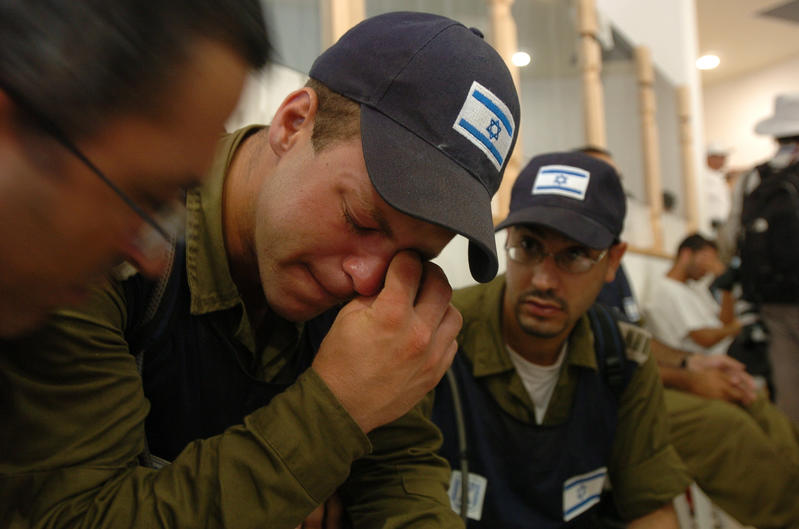
Is All Israel News’ faithful reporting important to you? Be part of it—help us continue by becoming a $5/month supporting partner.

J. Micah Hancock is a current Master’s student at the Hebrew University, pursuing a degree in Jewish History. Previously, he studied Biblical studies and journalism in his B.A. in the United States. He joined All Israel News as a reporter in 2022, and currently lives near Jerusalem with his wife and children.
You might also like to read this:




